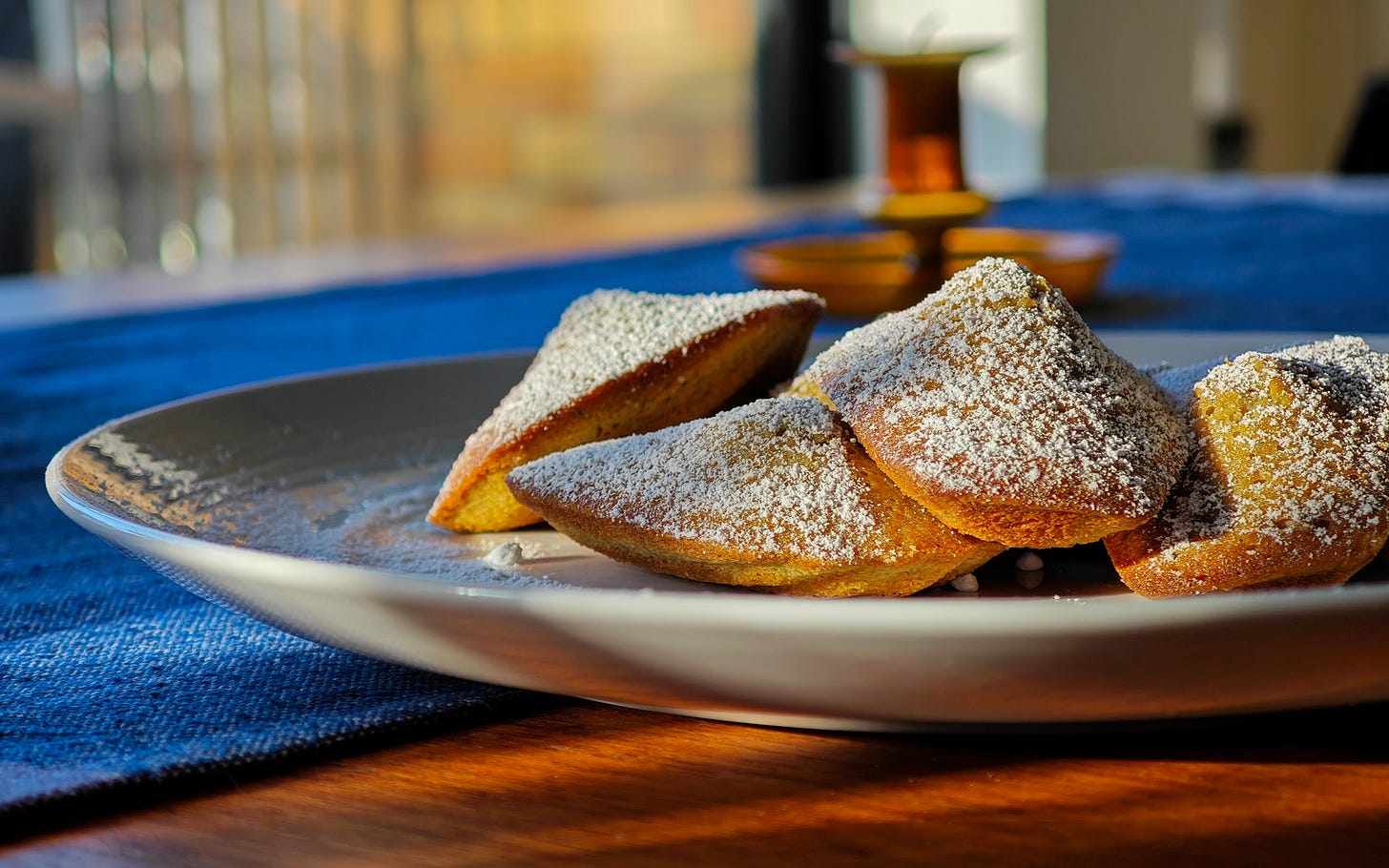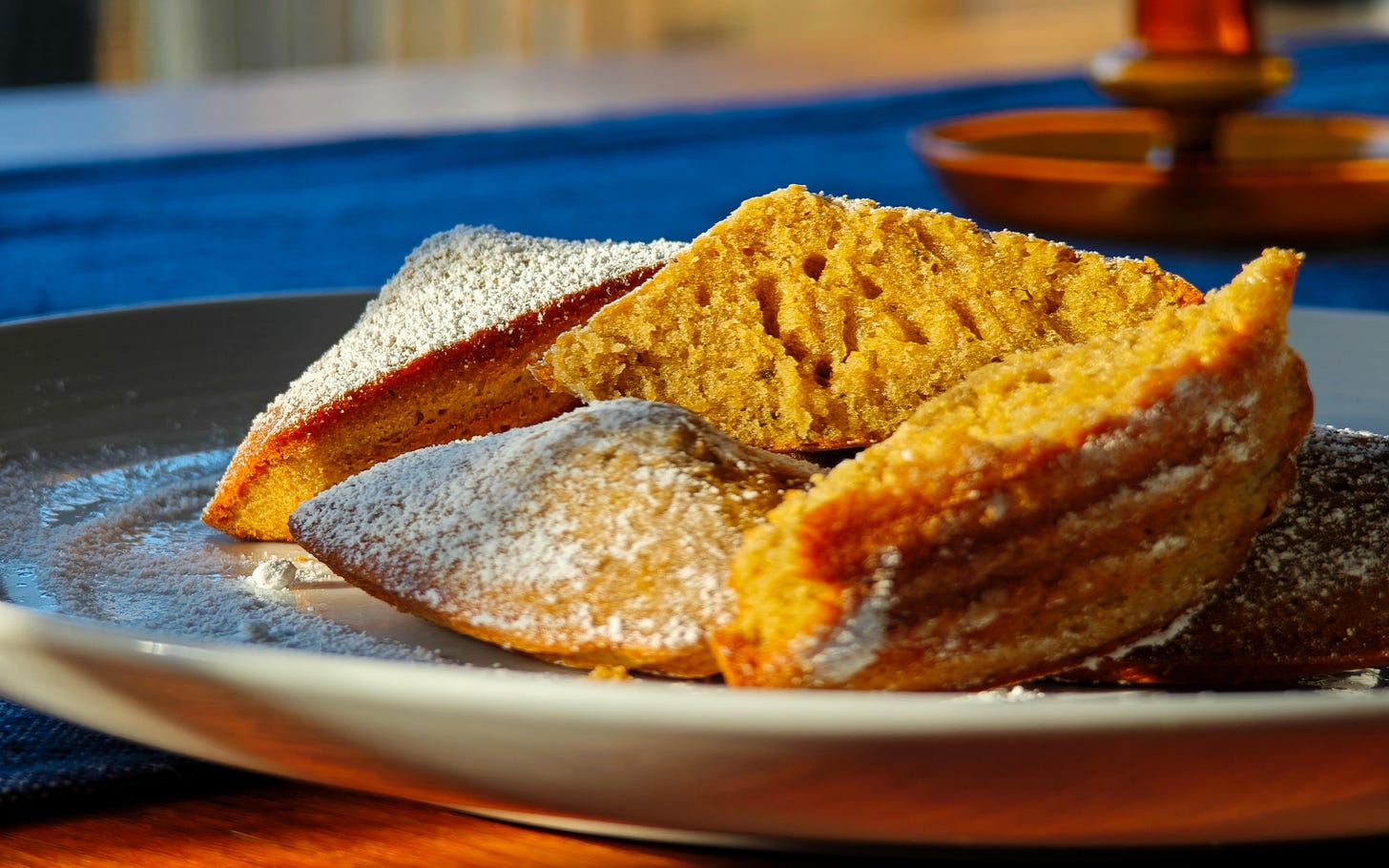Recipe: Madeleines
The one dinner party trick doctors don't want you to know about
Growing up, madeleines were dry, stale, dense things that came in big bags in French supermarkets — just appealing enough to keep three annoying kids quiet during a long holiday drive, but without much else going for them. It took St. John to change that.
(I know, I know — a St. John reference? In Braise? What is the world coming to?)
I mostly ignored the madeleines on my first couple of visits — when a dessert menu boasts various big dense British puddings with custard, I find it hard to look elsewhere — but after reading enough write-ups insisting that they are the dish you must not skip, I finally relented.
And they are, indeed, glorious. Cooked fresh to order, these aren’t dry or dense at all: they’re chunky little clouds of cake, warm and steaming and honeyed. They’ve got enough about them to feel like a proper dessert, but aren’t so onerous as to feel like an ordeal after two heavy courses; sweet enough to complement a coffee, not so saccharine as to overwhelm with a dessert wine.
There’s only one reason I wouldn’t call them an essential St. John order: they’re really, exceptionally, easy to make yourself. And well.
In fact, I’d go so far as to say that they might be the ideal dinner party dessert. They’re perfect to eat for all the reasons above, but are also perfect to prepare because they take about ten minutes of real work, all done in advance, and can then be popped in the oven once you’ve killed the mains, ready to be eaten straight out of the oven in the time it takes you to clear the table.
Because that is the essential element to the madeleine, the small secret that helped St. John turn them into something special: freshly baked there is a magic to madeleines, but it fades fast (the restaurant cooks its to order, for exactly this reason). This is, after all, essentially just bare, buttery sponge cake, sparse and simple and special only while there’s enough oven heat left for them to warm your mouth. Leave these for a few minutes too long, and the appeal is lost a little. This is often overstated — some recipes seem to suggest that if you don’t eat your madeleines immediately then you might as well just bin them — but it’s fair to say that the window when they’re at their best is brief.
The other reason to make madeleines at home is that they’re especially adaptable. I love making them with matcha, as you may be able to tell from the very slight green hue to the ones above, and have experimented with cocoa too. The lemon zest in my recipe can easily be subbed for other fruit peel; I’m sure the honey could be swapped for maple syrup to great effect. Because these are un-iced and super-simple, it’s easy to create whole new versions with little risk and even less effort.
The only real downside to baking madeleines at home is that you will need a madeleine tray — you just can’t really bake them without. This isn’t much of a barrier though — mine cost about a tenner on Amazon, and is still going strong a few years later. Since the actual ingredients are about as cheap as it gets, this could pay for itself if it saves you from the temptation of baking more elaborate or expensive desserts.
How to make madeleines
Keep reading with a 7-day free trial
Subscribe to Braise to keep reading this post and get 7 days of free access to the full post archives.





